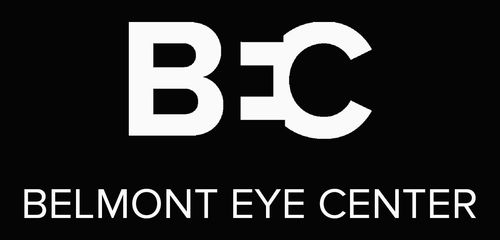What Is a Cataract?
A cataract is a clouding of the eye’s lens, which often progresses gradually, compromising vision more and more as time goes on. A cataract can develop in one or both eyes. As a person ages, cataracts often occurs as the result of proteins clumping together on the eye’s crystalline lens, leading to the cloudy visual effect.
Related Pages
New York City Cataract Surgeon Sandra Belmont, M.D.
What Cataract Surgery Entails
Cataract surgery is a quick, painless procedure performed under topical anesthesia, on an outpatient basis. Patients typically notice improved vision within a couple days after the procedure. Dr. Belmont creates a small incision in the cornea, through which she inserts a miniscule probe that emits ultrasonic waves. The ultrasound energy gently breaks up the cataract-diseased lens, so Dr. Belmont can easily suction the pieces from the eye. Once the cataractous lens has been removed, Dr. Belmont replaces it with an intraocular lens implant (IOL) to restore the patient’s sight after surgery.
Laser Cataract Surgery
Many of the steps of cataract surgery that were previously done with handheld instruments can now be performed with the meticulousness of a laser. Like a fingerprint, every eye has a unique size and shape. Prior to Laser cataract surgery, Dr. Belmont uses the laser to produce a high definition, 3D map of the eye. This allows Dr. Belmont to customize a surgical plan for that eye which best suits the patient. Once imaged, the laser is now able to create precise incisions in the cornea along with a circular opening in the lens capsule to remove the cataract. The laser also softens the cataract to insure a more efficient, gentle extraction. After removal and insertion of the replacement intra ocular lens (IOL), the laser may be used to further reshape the cornea to improve the patient’s visual outcome. The whole process usually takes not much more than 30 minutes altogether of which just a few minutes is the laser portion. Your eyesight will continue to improve for several days or weeks after surgery and normal activities, including strenuous exercise may be resumed shortly afterwards.
Your Iol Options
Standard monofocal IOLs restore clear focus at a single fixed distance. Monofocal IOLs are set to near, far or intermediate distance vision.
In addition to offering traditional IOL options, Belmont Eye Center offers a range of premium IOL choices including multifocal IOLs that allow patients to see clearly at multiple distances. Multifocal IOLs have multiple focusing powers within the same lens (in different zones). As the eye adapts to the multifocal lens, the brain learns to automatically select the appropriate focus.
Belmont Eye Center also offers toric IOLs, which correct pre-existing astigmatism (a refractive error caused by an abnormal corneal curvature).
Which Iols Are Appropriate For Treating Which Conditions?
The IOL that is appropriate for you depends on factors such as which distances you want to be able to see clearly after surgery, whether you are open to wearing glasses and whether you have astigmatism. Dr. Belmont and our team will consult with you prior to cataract surgery and recommend the IOL best suited to your needs and expectations.
When Should I Get Cataract Surgery?
In the early stages of cataract development, it may be possible to improve mildly impaired vision with prescription lenses. However, as a cataract progresses and starts to impair your vision, the only effective treatment option is to remove the cataract-diseased lens with surgery. If you cannot drive at nighttime or watch television, or are starting to have trouble recognizing faces, it is probably time to consider cataract removal.
Cataract Surgery Recovery
Everyone recovers from cataract surgery differently. Some patients are able to see well the day after surgery; others need a few days or weeks to see visual improvements.
The eyes should be covered at all times with a shield or glasses for the first week after surgery. Bending, heavy lifting and straining are not permitted during the initial recovery period. Prescription eye drops should be used to prevent infection and inflammation.
Dr. Belmont follows up with each patient during recovery to ensure the eyes are healing well.
Other Causes Of Cataracts
Aside from the role that the natural aging process tends to play in the development of cataracts, other possible causes of cataracts include:
- Eye trauma
- Congenital factors that can cause cataracts to develop in both eyes in the womb or during childhood (The cataract may be small enough that it does not adversely affect the child’s eyesight.)
- Previous eye surgery that was addressing a different vision problem
- Certain health conditions such as diabetes
- Certain behaviors such as smoking or steroid use
- Exposure to radiation
Who Is At Risk Of Cataracts?
The biggest risk factor for cataracts is age. Family history of cataracts and systemic diseases like diabetes can also raise a person’s risk of developing cataracts. Other risk factors include lifestyle habits like smoking and excessive drinking, and prolonged overexposure to the skin.
Are Cataracts Preventable?
Although there is no way to completely eliminate the risk of cataracts, eye experts believe a few personal behaviors may delay the development of cataracts.
Not smoking or drinking a lot of alcohol, and eating a healthy diet full of nutritious foods may postpone the onset of cataracts. Wearing sunglasses and hats to protect the eyes from the sun’s rays can also lower the risk of early onset cataracts. People with diabetes should manage the condition closely, under the supervision of a medical doctor, to prevent related eye problems.
If you are over the age of 40, you should have regular eye exams. Catching cataracts in their early stages may save your sight.
Candidates For Cataract Surgery
You may be a candidate for cataract removal if cloudy, compromised vision due to cataracts is affecting your quality of life. In order to qualify for surgery, you should not:
- Be pregnant or nursing
- Have excessively dry eyes
- Experience a change in vision prescription within the last year
- Take certain medications that can cause a change in vision.
Cataract surgery is extremely common and most people with cataracts qualify for surgery. The sooner the cataracts are removed, the better. Without treatment, cataracts will become increasingly denser and more difficult to remove.
Can Cataracts Grow Back?
Cataracts cannot grow back, because the eye’s natural lens is replaced with an artificial lens and artificial lenses cannot form. In a small percentage of cases, the capsule that holds the lens in place can become cloudy after surgery, and cause symptoms similar to a cataract. This condition can be treated with a simple in-office procedure.
Uncloud Your Vision Today
If you are tired of looking at your loved ones’ faces and other images through a cloudy veil, start on your way to achieving unclouded vision today.
To schedule an appointment with Dr. Belmont or to learn more about cataract surgery and your IOL options, please contact Belmont Eye Center by calling (212) 486-2020.









